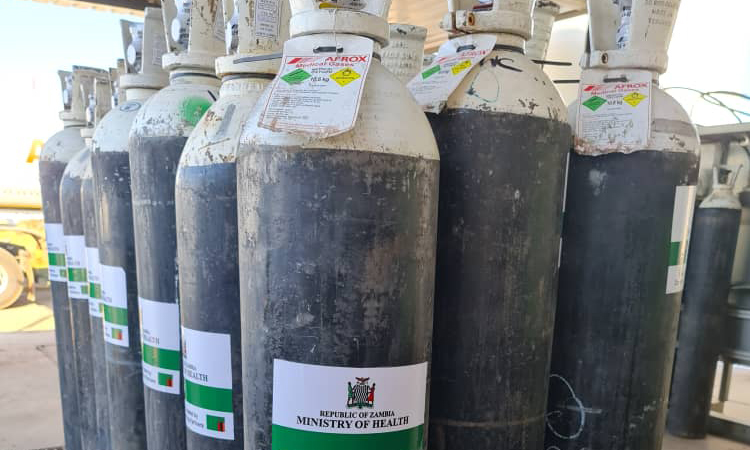Low- and middle-income countries have been working for decades to strengthen their health systems with much success. The COVID-19 pandemic has created significant challenges for these systems across the globe, setting back improvements in many countries.
Zambia has experienced devastating waves of the pandemic. The third and most recent wave has led to an unprecedented number of infections, placing a serious strain on the health system, and increasing hospitalizations and deaths. It has also impacted gains in reaching universal health coverage.
More patients reaching hospitals need advanced support in intensive care units and emergency wards. Optimal use of hospital infrastructure including beds, drugs, patient monitoring devices, and medical oxygen has become a top priority for Zambia’s COVID-19 response team. The situation in Zambia is typical of one that is desperate, requiring team effort from all players in the healthcare system. At any given time, more than 70 percent of COVID admissions require oxygen therapy. This demand is higher than what can be met by the current public production capacity in the country.
Traditionally, Zambia’s health facilities have relied on Pressure Swing Adsorption (PSA) plants for oxygen supply. PSA plants produce oxygen using a gas pressure technology, and many of the PSA plants being used in Zambia were designed for normal patient volumes, producing about 30,000 liters of oxygen per hour. In contrast, COVID-19 patients require up to 3,600 liters of oxygen per patient in an hour which would mean exhausting the capacity of many smaller plants with less than 10 patients. Indeed, over 75 percent of patients hospitalized with COVID-19 in Zambia require production of 60 liters per minute. As a result, the existing supply solutions alone have not been able to meet the current demand.
In June, the Clinton Health Access Initiative (CHAI) and Unitaid announced a memorandum of understanding (MOU) with liquid oxygen manufacturers, Air Liquide and Linde, to collaborate with partners in the World Health Organization’s (WHO) ACT-Accelerator to increase access to medical oxygen in low-and middle-income countries. Utilizing this MOU, CHAI worked with Linde (through AFROX Zambia) and other partners to move the work forward. In addition to helping facilitate equitable access to oxygen to meet the emergency needs of the COVID-19 pandemic, the collaboration also aims to build a framework for local contractual agreements – in line with standard public procurement practices – which could form the basis of longer-term purchasing deals by governments and global agencies that fund access to medical oxygen to avoid supply shortages.
Working with urgency, the CHAI team in Zambia worked with our Essential Medicines team alongside the government, partners, and AFROX to set up a functional system to optimize the use of available medical oxygen. Recognizing that any delay in action could cost lives, partners spent sleepless nights to ensure that oxygen would be available at health centers to meet demand.
Lusaka and Copperbelt provinces represented slightly over 60 percent of all COVID cases in the country. Recognizing this, we went to work immediately to increase access to medical oxygen in the top seven facilities from the two provinces, including University Teaching Hospital, Levy Mwanawasa Teaching Hospital, National Heart Hospital, Chilenje First Level Hospital, Maina Soko Military Hospital, Ndola and Kitwe Teaching Hospitals. These hospitals have seen a daily demand of up to 2,000 cylinders of medical oxygen per day.
This work stabilized oxygen supply in the seven initial hospitals and efforts are now being undertaken to ensure that additional hospitals equally have sufficient oxygen for patient care. CHAI is continuing to proactively work with partners such as PATH and the government to ensure overall coordination of the response at the country-level, optimize donor resources to ensure investment in medical oxygen, and routinely quantify the need for medical oxygen and oxygen delivery devices.
As part of the long-term conversation, we are looking to assist with strengthening the technical capacity of Zambia’s Ministry of Health to manage the engineering side of medical oxygen production and help make long-term investments in bulk oxygen storage tanks that would permanently resolve the oxygen crisis, regardless of the severity of the pandemic. This level of investment entails zero reliance on oxygen cylinders and would be sufficient in ensuring gains post-COVID for the management of other illnesses that need oxygen.
CHAI Zambia remains committed to supporting the government to continue efforts to strengthen the health system to not only combat the spread and effects of COVID-19 but also ensure long-term gains are not lost.







